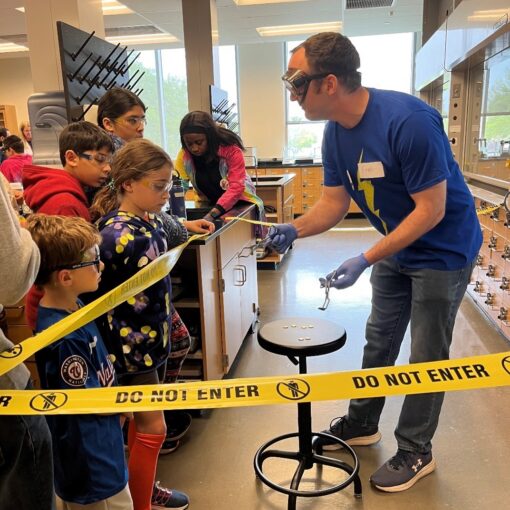The Chemical Society of Washington (CSW) participates in Project SEED, a summer research program for economically disadvantaged high school students to experience what it’s like to be a chemist. Participants are asked to share with CSW members something from their experience that has impacted their perspective as a chemist.
By Aria Kim
Attending a Science, Technology, Engineering, and Mathematics (STEM) magnet school, I thought that a research internship was absolutely necessary for me, regardless of whatever career track I may end up on. So I felt relieved and ecstatic when I was accepted into the SEED program for the summer before my junior year. The research combined organic chemistry and physical chemistry- two branches which I did not expect to see combined- in order to crystallize thymine, a key component of DNA. The process of crystallizing thymine turned out to be simple enough, but the experiments were focused on creating altered forms of these crystals using dyes and other chemicals to understand how it changes the crystal’s properties.
Upon first walking into the lab, I was surrounded by rows of tables with vials of solutions and crystals. They ranged from transparent & fragile enough to break apart with a little shake to large chunks of orange & blue crystals which had to be cut down in order to measure any chemical properties. There was one giant container in particular which looked like it could be used to serve noodles, but was instead was covered in a layer of yellow crystals.
I expected that I would spend the majority of my time actively working in the lab, always creating new samples through complex methods and working with the equipment as they heated up my samples. However, scientific research can be as much a game of patience as it was a game of inquiry. Since I had to mix solutions together and wait for them to crystallize, it often left me with a lot of waiting time. It didn’t take long for me to find out I wasn’t a unique case, and it was just part of the profession which had to be dealt with.
But I was fine with this. It was to be expected, because research is not a world of immediate feedback. And there was definitely progress; had there been none, I would not have bothered to come back for a second summer. There were moments where I felt like I was in a rut and was not accomplishing anything, only making crystals here and there. There were many, many days with no magical breakthrough.
But at the end of the summer, after hours of compiling a final paper with my mentor and tearing my hair out over how PowerPoint won’t let me move the picture of a melting crystal to the right location, I stood at my last group meeting with my labmates. My presentation, the display of the cumulative work I had done, turned out to be far more than I thought it would be while I was working. I ended up finding several possible new co-crystals, with two in particular which looked great for prospective studies. Considering that co-crystals are essentially made by trial and error, and that there were no patterns for what kind of properties it might have, it seemed pretty impressive.
For more information on Project SEED, please look here and here. Contact csw@acs.org with additional questions.

